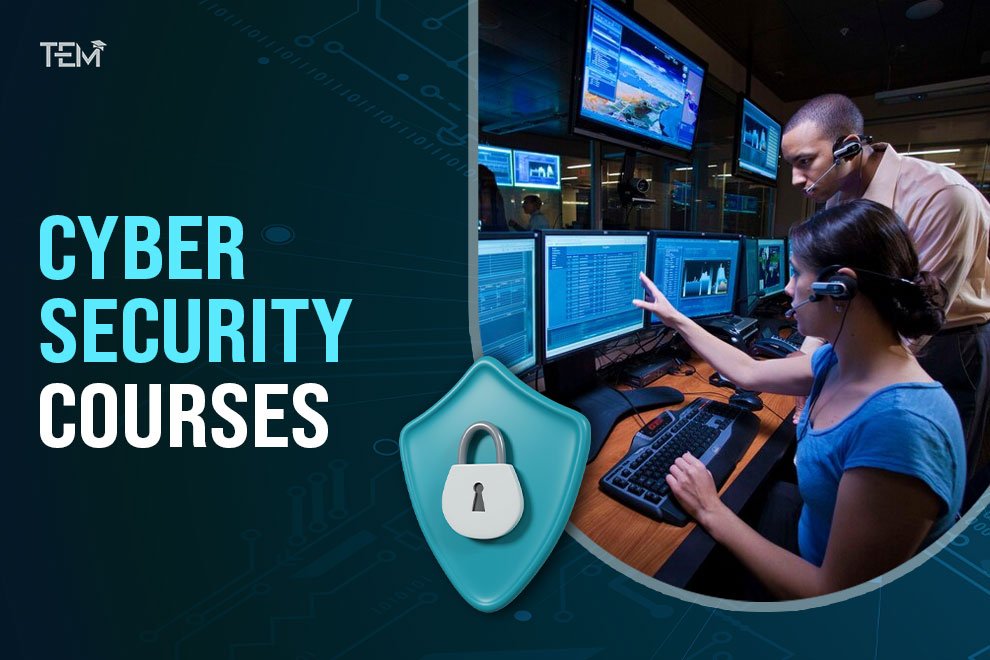Cybersecurity isn’t what it used to be. It’s no longer just about setting firewalls or updating antivirus software. It’s about staying ahead in a world where threats evolve faster than most people can understand them. Every new piece of tech—from AI to 5G—creates a new door for attackers. And unless you’re ready, that door stays wide open.
That’s why today’s cybersecurity professional isn’t just a techie—they’re a strategist, a learner, and often the last line of defense. And in 2025, the best opportunities will belong to those who specialize. But here’s the tricky part: not all cybersecurity courses are made equal. Some just tick boxes. Others actually prepare you for the battlefield.
If you’re serious about building a future-proof career in cybersecurity, this guide breaks down exactly where the field is headed—and how the right course can help you lead the charge.
The Imperative of Specialization: Why Focus on Emerging Trends?
The tech world moves fast. And in this race, general IT knowledge is like running barefoot. It might’ve worked once, but not anymore. Today, if you’re not specializing, you’re falling behind. That’s exactly why cybersecurity courses have become non-negotiable.
Here’s why. In 2025, nearly 4.8 million cybersecurity jobs will be unfilled worldwide. Just the U.S. alone is short by 500,000+ experts. Why? Because threats aren’t just growing—they’re evolving. And traditional skills just can’t handle that.
AI? It’s no longer just cool tech—it’s a weapon. From data poisoning to adversarial attacks, it’s changing the game. IoT? Attacks on smart devices went up by 124% in 2024. That’s not a small number—that’s a red flag. Cloud? It’s expected to hit a whopping $1.27 trillion by 2028, and it’s already full of loopholes that attackers love.
Add to that a 15% rise in device risks in 2025. Sectors like finance, healthcare, and retail are bleeding through these digital holes. And most organizations? 67% say they can’t find the right talent.
Now let’s talk rewards. In India, cybersecurity roles start around ₹5 lakh, shoot up to ₹12 lakh, and touch ₹30 lakh+ in senior roles. Globally, CISOs are earning $180K–$250K.
Bottom line? If you’re serious about future-proofing your career, cybersecurity courses aren’t just useful—they’re urgent. This isn’t about learning tools. It’s about staying relevant, staying in demand, and staying ahead.
And trust me, those who specialize today… lead tomorrow.
Trend 1: Securing Artificial Intelligence & Machine Learning (AI/ML)
AI is changing the way we secure digital systems—but it’s also changing how attackers break in. That’s why cybersecurity courses focused on AI/ML are gaining serious attention in 2025.
Think of AI as a double-edged sword. On one side, it’s helping detect threats faster than ever. It scans millions of logs, flags insider threats, and learns from attacks on its own. But on the flip side, attackers are also using AI. They poison data, fool machine learning models, and even use AI to create deepfakes or write phishing emails that look real.
In fact, adversarial attacks and prompt injections are now major risks. AI systems, especially chatbots and large language models, can be tricked into leaking data or making dangerous decisions. That’s where the real challenge lies—not just building AI systems, but securing them.
Today’s security roles need more than just basic IT skills. You need to understand how AI models are trained, how data is protected, and how to defend against attacks built for machines. That’s why top institutions like SANS, IIT Kanpur, IBM, and MIT are offering advanced cybersecurity courses tailored to AI security.
For instance, the IIT Kanpur course on GenAI security trains professionals to handle deepfakes and prompt injection attacks. Courses like SANS SEC595 go deep into MLOps and real-world AI threat response.
These skills are not just rare—they’re highly paid. Experts in AI/ML security are now commanding salaries up to ₹30 lakh+ in India and $250,000 globally.
If you’re thinking about where cybersecurity is heading, AI is the frontline.
Trend 2: Mastering Cloud Security
Cloud computing looks easy from the outside. But under the hood, it’s a complicated maze of security responsibilities. Most people assume the cloud provider takes care of everything. That’s a mistake. In reality, security in the cloud follows a shared responsibility model—providers manage the platform, but you manage your data, access, and settings. That’s where most breaches happen.
In 2025, misconfigurations will remain the leading cause of cloud leaks. A wrong setting on a storage bucket? Boom—millions of records exposed. Weak IAM policies? That’s a direct invitation for attackers. As more companies move to multi-cloud (used by over 78% of organizations) and hybrid models (used by 54%), security gets even harder. Multiple platforms, scattered identities, and inconsistent rules make it a nightmare to manage.
This is why cybersecurity courses focused on cloud security are exploding in demand. These courses teach the real stuff—how to manage identity, apply zero trust, protect data, and secure containers like Docker and Kubernetes.
Top names like AWS, Microsoft, Google, ISC2, and CSA offer certifications that cover everything from encryption to compliance (think GDPR and ISO 27001). For example, AWS Security Specialty and CCSP by ISC2 are go-to choices for professionals who want to level up.
In the real world, tools like CSPM help detect misconfigurations early. And unified IAM policies help prevent identity sprawl, one of the silent killers in cloud breaches.
Bottom line—if you want to build a career that matters, mastering cloud security through the right cybersecurity courses isn’t just an option. It’s your competitive edge.
Trend 3: Securing the Internet of Things (IoT) & Operational Technology (OT)
We’re surrounded by smart devices—cameras, sensors, routers, you name it. They make life easier, but they also open the door to serious risks. And here’s the real problem: most of these devices were never designed with security in mind.
That’s why learning IoT and OT security through specialized cybersecurity courses is no longer optional—it’s critical.
In 2025, attackers are still using the same old trick—default credentials—to get into devices. And it works. Why? Because many devices still ship with weak passwords, and people don’t change them. Others are placed in public areas where anyone can tamper with them. Many can’t even be updated because they don’t have the memory or hardware for it.
Now, take it a step further into industrial settings. Factories and power plants run on old systems—PLCs, SCADA, you’ve heard the names. They’re crucial, but also vulnerable. In 2024, ransomware attacks in OT environments jumped by 87%. Worse, 65% had insecure remote access. That’s not just a breach risk—that’s national security on the line.
This is where top-tier cybersecurity courses like SANS ICS410, AWS IoT Security, and ISA/IEC 62443 certifications come in. They teach how to build secure firmware, lock down industrial networks, and prevent attackers from turning your toaster—or your turbine—into a weapon.
Smart cities, factories, and utilities can’t afford downtime. The only way to stay ahead? Learn the right skills, master the right tools, and never underestimate a “smart” device.
Other Critical Emerging Areas in Cybersecurity
As cyber threats get more complex, just knowing the basics won’t help. Today, several emerging areas are shaping the next decade of defense, and each one demands its own skill set. The right cybersecurity courses can help you stay on top.
Let’s break down the most critical ones:
Zero Trust Architecture (ZTA)
Forget trust. In ZTA, every request is verified—no exceptions. Whether it’s a user, device, or app, nothing moves without authentication. You’ll find this concept in advanced cloud security and network security courses, especially from providers like Microsoft, SANS, or Coursera’s specialization tracks.
5G Network Security
With 5G, we’re talking faster speeds but wider attack surfaces. Edge computing and device overload create fresh risks. Look for telecom-focused cybersecurity courses or specialized modules in network infrastructure security.
Cybersecurity Mesh Architecture (CSMA)
Security is no longer centralized. CSMA spreads it across different environments. To learn this, explore courses on API security, microservices, or integrated security operations.
Quantum Computing & Post-Quantum Cryptography (PQC)
Quantum tech threatens today’s encryption. It’s still early, but a few PQC research courses and university-led programs (MIT, Stanford) offer foundational insights. Start now if you want to stay ahead.
Supply Chain Security
Third-party code is convenient—but risky. Vendor risk management and software supply chain security courses help manage this growing blind spot.
Human Factor
Still the weakest link. Courses on security awareness, phishing prevention, and social engineering defense remain just as critical.
Cybersecurity isn’t one-size-fits-all anymore. The smarter you specialize, the stronger your edge.
Choosing Your Path: How to Select the Right Cybersecurity Course
Choosing the right cybersecurity course isn’t about picking the most popular one—it’s about picking the one that fits you.
Start with where you are. Are you just starting out, or do you already have some experience in tech or IT? If you’re a beginner, stick with foundational cybersecurity courses that explain the basics. If you’re more advanced, look into specializations like cloud, AI, or IoT security.
Next, be clear on your career goals. Want to become a penetration tester? Aim for courses that cover ethical hacking and offensive security. Targeting cloud roles? Go for AWS, Azure, or Google Cloud certifications.
Then, match the course format with your learning style. Some prefer self-paced learning, others need instructor-led sessions. But here’s the truth: in cybersecurity, hands-on labs are non-negotiable. You need to break things, fix them, and repeat.
Also, check for prerequisites and time commitment. Don’t overcommit and burn out. Pick what fits your schedule and energy.
Look closely at the instructor’s background and the platform’s reputation. A well-taught course from a trusted name (like SANS, Coursera, or Microsoft) carries real weight.
Think about ROI—free content is great, but certifications that open doors are worth investing in. And always check if the course offers access to community forums or mentors.
Lastly, consider local market demand. For example, in India, cloud and AI security roles are booming. So choose a course that aligns with the job landscape near you.
Choosing wisely now makes all the difference later.
Key Takeaways
Cybersecurity is no longer just a technical field—it’s becoming a strategic one. The future belongs to those who see the shifts early and skill up before the market demands it. With AI, cloud, and IoT evolving rapidly, the old rulebook doesn’t apply anymore. What matters now is specialization. Not just learning tools—but understanding systems, anticipating risks, and building real-world resilience.
For anyone planning to grow in this field, the timing couldn’t be better. The global talent gap keeps widening, salaries are rising, and organizations are actively searching for people who can secure what others don’t fully understand yet. The smartest move now is to double down on emerging areas. Cloud misconfigurations, AI prompt injections, OT ransomware—these aren’t future threats. They’re happening now.
This decade will reward those who stop following general paths and start designing their own. Whether starting out or already in the field, choosing the right cybersecurity courses today sets the tone for long-term relevance, stronger roles, and serious impact.
The next phase of cybersecurity won’t be about defending what exists—it’ll be about securing what’s being built. And the ones who prepare for that now, lead later.











